
Rail Loading Tanks, Oct 1979
Rail loading tanks is a basic fact of life for the tanker. The excessive weight of tanks both damages roads and places heavy wear and tear on the vehicles when moved cross country. Therefore, the primary method of moving tanks (as well as most other military equipment) is via rail. The tanks are first prepared for the rail load. Tarps and loose equipment are all secured, and if going to gunnery, the main gun ammunition is downloaded and stored in special connexes near the rail head.
Left is the motorpool of the 2/32 armor. Behind is the infamous "Bubble Gym," a constant headache since the roof, held up by air pressure, regularly collapsed!
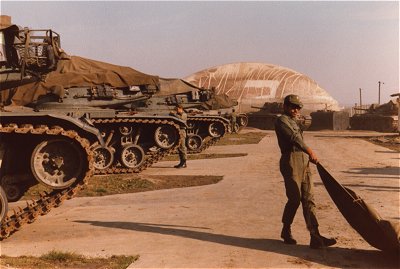
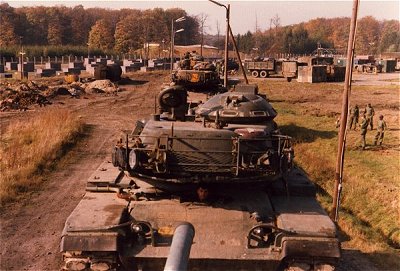
Each flat car tanks one tank. Smaller and lighter equipment can double up on the flat cars, and some flat cars with low sides are used for these lighter vehicles. Typically, wheeled vehicles road march to the next location, while only the tracked vehicles were rail loaded. Yet, for major deployments, all vehicles would be rail loaded.
In the background of the photo at right are the connexes used to stow the main gun ammunition when the units moved to Grafenwohr for gunnery.
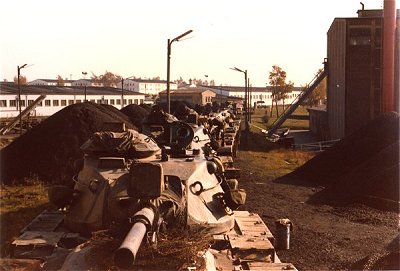
Once the tanks were loaded on the cars, hatches were secured as well as other equipment. For example, slung around the travel lock on the rear deck is a roll of concertina wire. This was a wire with a razor edge (rather than a barb) and was used to cordon off and secure our tank motorpool once deployed to Hohenfels or Grafenwohr.
In the photo, on the right side, is the kaserne power plant. Each US Army installation (and the other branches as well) are self-contained little cities, with their own water and power supply. In this way, posts are not dependent on the national infrastructure to maintain operations.
Actually moving the tanks onto the flat cars can be a bit tricky at first, but once one gets used to it, it's not too hard. There are a few key safety tips: 1) do not stand on the same car as the one you are loading a tank. When the tank first gets on the car, the car could collapse, and you don't want to be on the car when that happens! 2) do not guide the tank to steer when it is first climbing onto the car. Wait until the weight is completely on that one car.
Finally, it was necessary to move a tank from one car to the next if you were the first to load, or last to unload. This could be very time consuming, and when rail loading, one doesn't want to take short cuts.
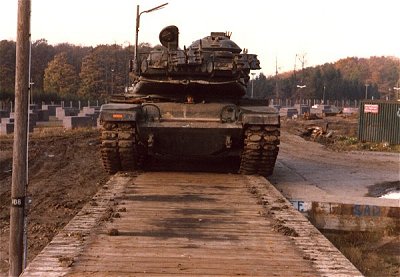
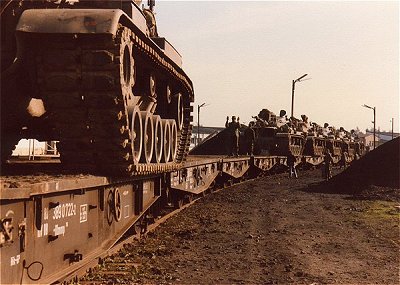
The photo at left shows how a ground guide moves a tank from one car to the next. The tanks behind him have already been loaded.
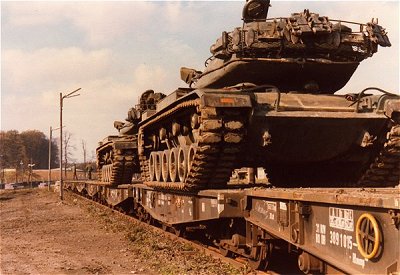
These two tanks are ready to move up further on the line of flat cars. Note that the tracks hang over the edge of the cars!